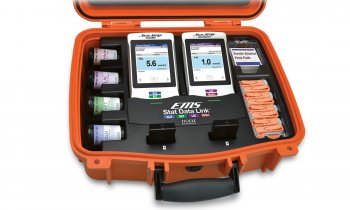Colorectal cancers
Variations across Europe in incidence and survival, by J Faivre, INSERM U866, Medical Faculty, CHU Dijon, France
Incidence data from cancer registries have drawn the attention to colorectal cancer. It is one of the most common cancers in developed countries. In 2006, the estimated number of new cases in the European Union of 25 member states was 297,000 for both genders.

It accounts for about 15% of all cancer cases. Despite advances in diagnostic and therapeutic methods, its prognosis remains relatively poor. The mean five-year relative survival is estimated to be 54% in Europe (EUROCARE study). Faced with this disquieting situation, considerable research efforts have been made over the last 20 years to evaluate the ability of screening procedures to decrease the mortality or incidence of colorectal cancer.
Geographical variations
The incidence of large bowel cancer varies widely throughout the world. Europe usually stands among high risk areas including North America, Australia and New Zealand and, more recently, Japan. In Europe incidence rates among areas covered by a cancer registry range from 59/100,000 in the Czech Republic and 25/100,000 in Finland in men, and from 32/100,000 in the Netherlands and Norway to 17/100,000 in Spain (Albacete) in women (period 1998-2002). A male predominance is reported everywhere. Incidence rates for colorectal cancer are relatively contrasted in Northern Europe, being higher in Denmark and Sweden than in Norway or Finland. Incidence rates are relatively similar in the UK, France, The Netherlands, Germany, Northern Italy and Switzerland. They are lower in southern Italy, Spain and Portugal. Although relatively low rates are generally found in East European countries, the highest incidence rates are observed in the Czech Republic and Slovakia. The observed variations in incidence rates largely reflect the varying distribution of risk factors between European countries as well as disparities in the effective delivery of cancer control measures.
Time trends in incidence
The last five volumes of the publication Cancer Incidence in Five Continents (International Agency for Research on Cancer) provide data on time trends on colorectal cancer incidence over the period 1978-2000. Different trends in colorectal cancer incidence can be seen around
the world. In Western Europe, incidence rates slightly increased, with the exception of Norway and Spain, where the increase was more pronounced. Incidence is also generally on the increase in East European countries.
Evidence exists for different time trends by subsite. Among available data in Europe, an increase in all colon subsites was reported in Denmark, Norway and Italy, whereas in Burgundy (France) the increase was limited to right and left colon cancers. In most areas, the incidence of rectal cancer was stable or decreased, whereas it increased in Norway. Differences in temporal variations in incidence rates of colorectal cancer by subsite suggest partly different aetiological factors and implications for screening strategies.
Variation in survival
To measure the overall effect of the management of cancer data on population-based survival is important. The EUROCARE working group is the largest population-based analysis of survival of patients with cancer with data from 83 registries in 23 European countries.
This study has shown that survival of patients with colorectal cancer markedly varied in Europe. The five-year relative survival rate for the period 1995 to 1999 varied between 42% (Poland) and 60% (Switzerland). Survival rates in Nordic countries, France, Germany, Austria, The Netherlands, Switzerland and Italy are above the European average.
It was a surprise from initial reports that indicated survival in the UK and Denmark were lagging behind many West European countries, suggesting that improvement in oncology services are needed. The lower survival rates are reported in East European countries.
Cancer survival in Europe has been increasing everywhere over the past 20 years, more rapidly in the countries with the lower survival. The wide differences between countries seen in the 1980s have decreased over time. However, colorectal cancer survival in the UK (51%) and Denmark (49%) is still below the European average. Ad hoc studies indicated that differences across Europe in colorectal cancer survival depend to a large extent on differences in stage at diagnosis. Particular emphasis should be made on achieving earlier diagnosis.
It is important to support more studies with population-based registries to know whether reported differences can be attributed to late presentation by patients, delays within healthcare systems or differences in management or treatment, particularly in access to specialised facilities.
Many more lives could be saved if the outcome in all countries was brought up to the standards of the countries with the better survival.
16.09.2009










